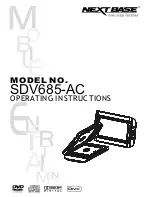
PowerSpout
TRG installation 2018
Last revised July 2018
© 2018 EcoInnovation Ltd (NZ)
Page 30
Do not operate the turbine connected to any MPPT controller or Grid-tie inverter without first
checking and adjusting the open circuit voltage (Voc) as described below! If the voltage is
too high then your controller or inverter will be destroyed and there is no warranty for this.
2.3.3.
Commissioning the turbine
Mount the turbine on suitable base.
The pipe should be attached, supported (if flexible or as required), secured, and
purged of air.
There must be a pressure gauge mounted on the pipework upstream of the control
valves.
Ensure the above electrical checks (Section 2.3.1)
have been carried out before field
commissioning.
It is important to formally commission the turbine and associated system to ensure it is
working correctly prior to leaving the site. It may take time to test everything because the
pipe may need to be purged of air and the battery may need charging before the diversion
loads can be verified as working.
Take photos and take notes of pressures, voltages etc. It is a condition of the warranty that
you document this process and send the information by email to your dealer.
2.3.4.
Commissioning (models TRG14, 28 or 56) connected directly to battery
Take a photo of the turbine identification plate for your records. Verify that the water
pressure is as stated on the plate. If the water pressure is much lower then you should find
and fix the cause, because otherwise you will need a different stator supplied.
Connect the power cable to the battery bank. Never connect your turbine to the system
electronics without first connecting the battery or your electronics will be damaged
immediately by over-voltage.
You may now open the turbine valves slowly until completely open.
If you have not yet greased the turbine, do this now with turbine running and the magnet
rotor off, so that you can check for grease emerging. See section 2.1.10 for details.
When the valves are fully open, check and record the operating water pressure and the
output current. If using flexible manifold pipes then adjust the pipe supports to fine-tune the
jet alignment (to maximise the speed/power). Normally the output will equal or slightly
exceed the value on the identification plate. But you may need to optimise the RPM first.
Check that the intake has surplus overflow water. If there is not enough water then the
pressure will fall as air enters the pipe. In that case you may need to close some valve(s) or
fit smaller jets before you can operate continuously.
Adjust the pipe supports to fine-tune the jet alignment (to maximise the speed). Apply
downwards, upwards and sideways pressure to the jet to alter the angle slightly and see
what effect this has on output. The jet position can be moved slightly within the casing. Once
optimized, secure and support the pipe.
















































